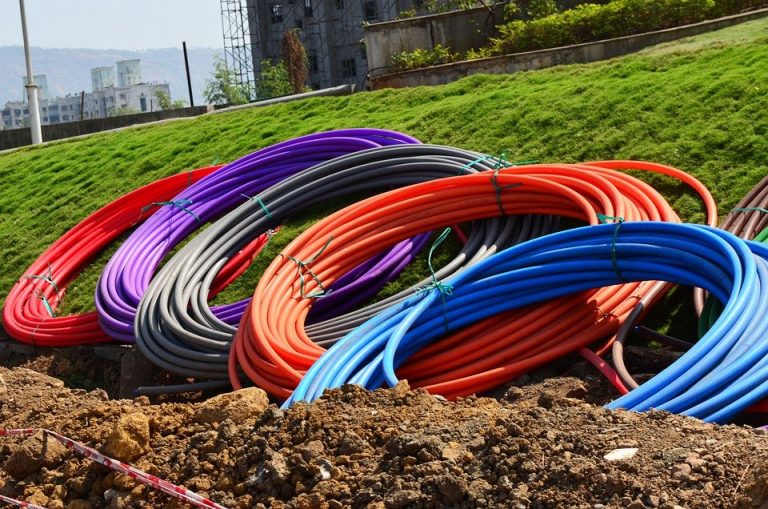An electrical conduit is a type of durable tubing or other enclosure type that serves the main purpose of protecting and providing a safe, enclosed route for cables and wires. Conduits will usually be required in applications like air conditioners where wiring is at a high risk of damage or where it is exposed. Conduits are made from various materials including plastic, metal and fiberglass and may be flexible or rigid. Conduits should always be installed in accordance with the National Electrical Code and any relevant local codes. Keep reading to find out more about the different types of electrical conduit and how they are used in construction.
Rigid Metal Conduit
This type of conduit is solid galvanized steel tubing that uses threaded fittings for installation. It is mainly used in external applications to provide wiring with protection from the elements and in some cases, to add structural support for electrical cables. There is also a thinner and more lightweight version available, known as intermediate metal conduit, which can be used in all the same applications as rigid metal conduit.
Fiberglass Conduit
Fiberglass reinforced epoxy conduit systems are becoming an increasingly popular alternative to other materials, such as rigid metal conduits. This material is more corrosion resistant and is shielded against electromagnetic interference and radiofrequency, making it a great choice for applications such as the installation of fiber optic internet cables. It is more impact resistant, making it an ideal choice for use in tougher environments where earthquakes or flooding is more likely.
Rigid PVC Conduit
Similar to plastic plumbing pipe, this type of conduit is installed with plastic fittings that are usually glued in place. Despite being rigid, it can be made more flexible and bent to fit when heated, which is usually done with the help of a portable heater box. Due to the fact that the fittings and tubings are fixed together with strong glue, rigid PVC conduit is one of the most watertight options, making it an ideal choice for wires that need to be buried directly in the ground, and in corrosive environments.
Flexible Metal Conduit
Flexible metal conduit has a spinal construction allowing for more flexibility. This allows the conduit to easily snake through walls and other structures. Because of this, it is most often used in dry indoor locations. There is also the option to use liquid-tight flexible metal conduit, which has sealed fittings and a plastic coating to make it watertight and more suitable for outdoor applications.
Electrical Non-Metallic Tubing
This type of conduit is flexible corrugated plastic tubing. It is flame- and moisture-resistant, easy to bend and installs easily with glued plastic fittings or snap-lock fittings. It is not suitable for outdoor space, so it will typically be a good choice for construction applications inside walls or concrete block structures.
Electrical conduits serve the main purpose of preserving and protecting a range of cabling types, including electrical cables and fiber optic internet cables. From traditional, rigid metal conduits to more modern, flexible PVC and fiberglass options, there are various types to choose from, all of which are better suited to certain construction applications.

